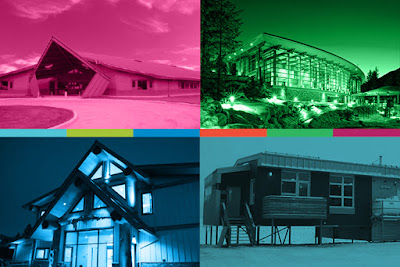Here's a quick way to add some diversity and inclusion into your own life while acknowledging the diversity of our land and peoples:
Edit your email signature to include an acknowledgement of the Treaty land that you live and work on.
The above is what I use (appropriate for Edmonton and other areas within Treaty 6 - for other treaty areas, change the "6" to the relevant treaty # or adapt as needed):
Here's some other examples that I've seen:
NorQuest College:
(Amiskwacîwâskahikan), Treaty 6 Territory
We acknowledge that NorQuest College is on the traditional lands of First Nations and Métis peoples, referred to as Treaty 6 Territory.
(I really like the inclusion of the Cree word amiskwacîwâskahikan meaning, "beaver hills house", which is the Cree word for Edmonton.)
An organization:
The [organization] is located on Treaty 6 territory, the traditional gathering place for the Cree, Blackfoot, Metis, Nakota Sioux, Saulteaux, Dene and other Indigenous peoples whose histories, languages, and cultures we acknowledge.
A colleague:
I would like to acknowledge that I live and work on Treaty 6 territory, a traditional meeting grounds, gather place and travelling route to the Cree, Saulteaux, Blackfoot, Metis, Dene and Nakota Sioux.
Moreover, I acknowledge the many First Nations, Metis and Inuit whose footsteps have marked these lands for centuries.
Another colleague:
Sent from Edmonton / Amiskwacîwâskahikan in Treaty 6 lands.
An acquaintance in BC:
Offering my acknowledgment of the Ktunaxa Kinbasket, the Sinixt, and the Okanagan peoples where their Traditional Territories meet and where the city of Nelson is located, & respectfully, my acknowledgment of the Traditional Territory you are working on. Also, I would like to acknowledge the Métis People who live and work on the various Traditional Territories across BC.
MacEwan University, at the entrance to their buildings, has this acknowledgement on a fancy plaque:
We acknowledge that the land on which we gather in Treaty Six Territory is the traditional gathering place for many Indigenous people. We honour and respect the history, languages, ceremonies and culture of the First Nations, Métis and Inuit who call this territory home.
The First People’s connection to the land teaches us about our inherent responsibility to protect and respect Mother Earth. With this acknowledgement, we honour the ancestors and children who have been buried here, missing and murdered Indigenous women and men, and the process of ongoing collective healing for all human beings. We are reminded that we are all treaty people and of the responsibility we have to one another.
(This acknowledgement is first in Cree syllabics, then Cree in English characters, and then in English. I particularly appreciate the acknowledgement of missing and murdered Indigenous women and children and the mention of ongoing collective healing.)
There are any number of ways to adjust your acknowledgement to reflect where you live and your personal style. The point is to add an acknowledgement.





















